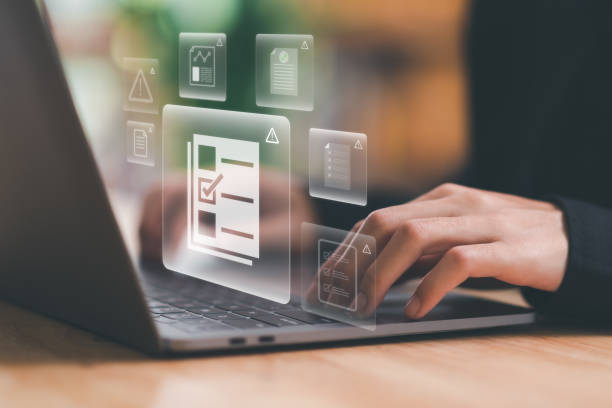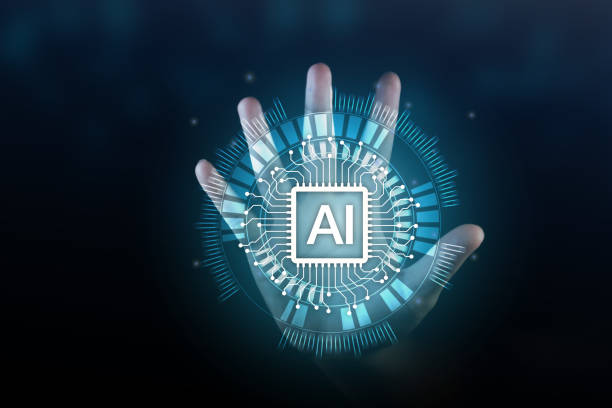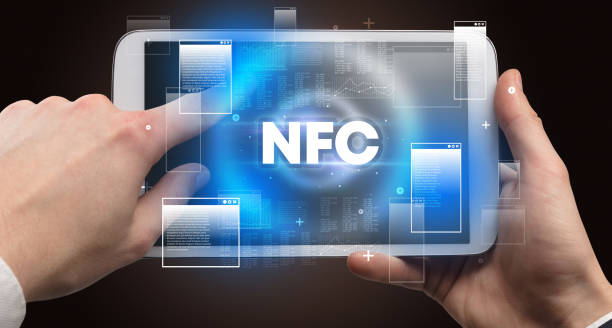What is On-Page SEO and Why Does it Matter?

On-Page SEO refers to a set of actions you take within your website to improve its ranking in search engines.
These actions include optimizing content, website structure, title tags, meta descriptions, and other page elements.
Why is On-Page SEO important? Because search engines use these factors to understand the page’s topic and its relevance to the user’s search.
A website with strong On-Page SEO has a better chance of ranking high in search results and attracting organic (free) traffic.
In fact, On-Page SEO forms the foundation of a successful SEO strategy.
Without internal optimization, other SEO efforts, such as Off-Page SEO, will not be as effective.
To better understand the importance of On-Page SEO, think about how search engines work.
They crawl web pages, index content, and then rank pages based on complex algorithms.
On-Page SEO helps search engines easily crawl, understand, and index your content.
Additionally, On-Page SEO helps improve User Experience (UX).
A website with a proper structure, clear content, and high loading speed keeps users satisfied and increases the likelihood of their return.
In short, On-Page SEO is an essential investment for any website that wants to be seen in search results and attract organic traffic.
By optimizing the internal elements of your website, you can improve your ranking, enhance user experience, and ultimately achieve your business goals.
Are you dissatisfied with low sales on your online store?
Rasaweb is your solution for having a professional and high-selling online store.
✅ Significant increase in sales and revenue
✅ Easy and enjoyable shopping experience for customers
⚡ Get a free consultation from Rasaweb right now!
Keyword Research; The Cornerstone of On-Page SEO
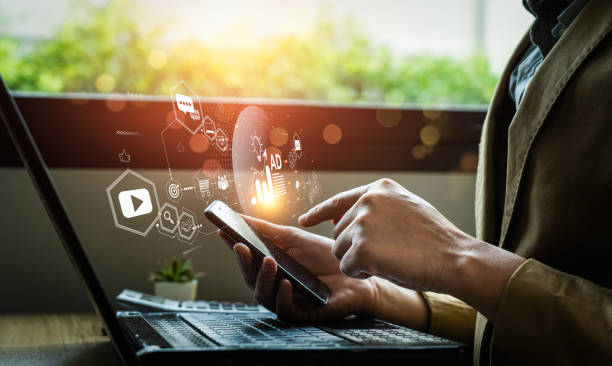
Keyword research is the process of identifying and analyzing the words that users use in search engines to find information, products, or services.
These keywords form the cornerstone of your On-Page SEO strategy.
Why? Because you optimize your website’s content based on these keywords to rank for them in search results.
To start keyword research, you must first identify the main topics of your business.
Then, using keyword research tools such as Ahrefs Keyword Explorer or Moz Keyword Explorer, create a list of keywords related to these topics.
When choosing keywords, pay attention to two important factors.
First, Search Volume, which shows how many times a month this keyword is searched.
Second, Competition, which shows how many other websites are ranking for this keyword.
Your goal is to find keywords with a suitable search volume and relatively low competition.
These keywords offer good opportunities to rank in search results.
In addition, pay attention to the length of the keywords.
Long-Tail Keywords, which include several words, usually have a lower search volume, but competition is also lower and they have a higher conversion rate.
For example, instead of the keyword “shoes,” use the keyword “buy men’s athletic shoes.”
After preparing the keyword list, prioritize them based on the relevance to your business, search volume, and competition.
Then, use these keywords to optimize content, title tags, meta descriptions, and other page elements.
Optimizing Titles and Meta Descriptions

Title Tags and Meta Descriptions are HTML elements that are displayed in search results and play an important role in attracting users to your website.
Titles are the main title of the page and should include the page’s main keyword.
Meta descriptions are a short summary of the page’s content and should be attractive and persuasive to encourage users to click on your website’s link.
To optimize titles, use the page’s main keyword at the beginning of the title.
The title length should not be more than 60 characters so that it is fully displayed in search results.
Also, the title should be accurate and relevant to the page’s content.
To optimize meta descriptions, provide an attractive and persuasive summary of the page’s content.
The meta description length should not be more than 160 characters.
Meta descriptions should include keywords related to the page’s content, but avoid excessive use of keywords.
Remember that titles and meta descriptions are the first things users see in search results.
Therefore, optimizing these elements is an important step in improving your website’s On-Page SEO.
A good title and meta description not only help improve your ranking in search results, but also increase the click-through rate (CTR) and attract more traffic to your website.
An important point is to try to create a unique title and meta description for each page of your website.
Avoid repeating titles and meta descriptions on different pages, as this can harm your On-Page SEO ranking.
| Element | Description | Optimization Tips |
|---|---|---|
| Title Tag | The title of the page that is displayed in search results. | Includes the main keyword, length less than 60 characters, unique for each page. |
| Meta Description | A short summary of the page’s content that is displayed in search results. | Attractive and persuasive, length less than 160 characters, includes relevant keywords, unique for each page. |
Optimizing Page Content

High-quality and relevant content is one of the most important ranking factors in search engines.
Search engines are looking for content that is valuable to users, answers their questions, and meets their needs.
To optimize page content, you must first identify the page’s main keywords.
Then, use these keywords naturally in the content text.
Avoid overusing keywords, as this can be considered “keyword stuffing” and harm your ranking.
Your content should be unique, original, and without copying from other websites.
Search engines penalize duplicate content.
Your content should have a proper structure.
Use Headings to divide content and highlight important points.
Use short and readable paragraphs.
Use images and videos to make the content more attractive.
Regularly update your content.
Old and outdated content has less value for search engines.
Try to keep your content up to date and add new and relevant information to it.
By following these tips, you can optimize your page content and improve your ranking in search results.
Remember that content is king.
High-quality and relevant content not only helps improve your On-Page SEO, but also keeps users satisfied and increases the likelihood of their return.
So spend enough time and energy to produce high-quality and valuable content.
Internal linking is also very important in this section.
Creating links between different pages of your website makes it easier for users and search engines to navigate your site.
Are you annoyed by losing customers who visited your site to buy something?
Rasaweb is your expert solution for having a successful online store.
✅ Significantly increase your online sales
✅ Create trust and professional branding with customers⚡ Get free advice from Rasaweb experts!
Optimizing Images
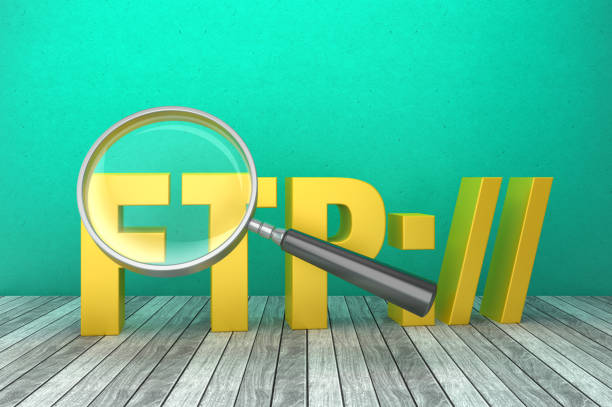
Images play an important role in the attractiveness and user experience of your website.
But unoptimized images can slow down page loading speed and harm your On-Page SEO ranking.
To optimize images, you must first reduce the image size.
Large images take a long time to load and can slow down your website.
Use image compression tools such as TinyPNG or ImageOptim to reduce image size without losing quality.
Optimize the image file names.
Image file names should be relevant to the image content and include relevant keywords.
For example, instead of the file name “IMG_1234.jpg”, use the file name “men’s-athletic-shoes.jpg”.
Use the ALT tag for images.
The ALT tag is text that is displayed if the image does not load.
The ALT tag should provide a brief and accurate description of the image content and include relevant keywords.
Use images in the appropriate format.
JPEG, PNG, and GIF formats are the most common image formats for the web.
The JPEG format is suitable for images with many colors, such as photos.
The PNG format is suitable for images with few colors and transparency.
The GIF format is suitable for animated images.
By following these tips, you can optimize your images and help improve your website’s On-Page SEO.
Remember that optimized images not only help improve page loading speed, but also improve user experience and help search engines better understand your page content.
Optimizing URL Structure
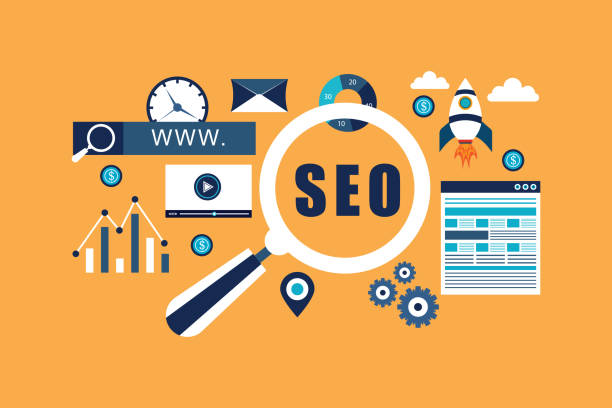
The URL structure of your website plays an important role in On-Page SEO and user experience.
A proper URL structure helps search engines easily crawl and index your website pages.
Also, a readable and understandable URL structure helps users understand which part of the website they are on.
To optimize the URL structure, use short and descriptive URLs.
Long and complex URLs are incomprehensible to search engines and users.
URLs should include keywords related to the page content.
Keywords should be separated by hyphens (-).
Use lowercase letters in URLs.
Using uppercase letters in URLs can lead to problems on some servers.
Use Subfolders to organize content.
Subfolders help you logically organize your website content and show search engines that different pages of your website are related to each other.
For example, if you have an online store, you can use subfolders like “shoes,” “clothing,” and “accessories” to categorize your products.
By following these tips, you can optimize your website’s URL structure and help improve On-Page SEO and user experience.
Remember that a proper URL structure not only helps improve your ranking in search results, but also helps users easily navigate your website and find the content they are looking for.
Internal Linking

Internal linking is the process of creating links between different pages of your website.
Internal linking is an important strategy in On-Page SEO that helps search engines better understand your website structure and helps users easily navigate your website.
For internal linking, use relevant and descriptive text.
Anchor Text should be relevant to the content of the page you are linking to.
Use relevant keywords in the link texts.
For example, if you are writing an article about “On-Page SEO,” you can link to other articles on your website that are about “keyword research” or “title optimization.”
Do not use “nofollow” links in your internal links.
“Nofollow” links tell search engines not to follow these links and not to transfer value to the destination page.
Avoid creating too many links on one page.
Too many links on one page can be annoying for users and harm the user experience.
Internal linking should be done naturally and logically.
Links should point to relevant and useful pages on your website.
By following these tips, you can optimize your internal linking and help improve your website’s On-Page SEO.
Internal linking not only helps improve your ranking in search results, but also helps users find relevant content on your website and improves the user experience.
| Advantage | Description |
|---|---|
| Improve SEO ranking | Helps search engines better understand the site structure and find more important pages. |
| Improve user experience | Helps users easily navigate the site and find relevant content. |
| Increase user dwell time | By directing users to other pages, their dwell time on the site increases. |
Optimizing Page Loading Speed
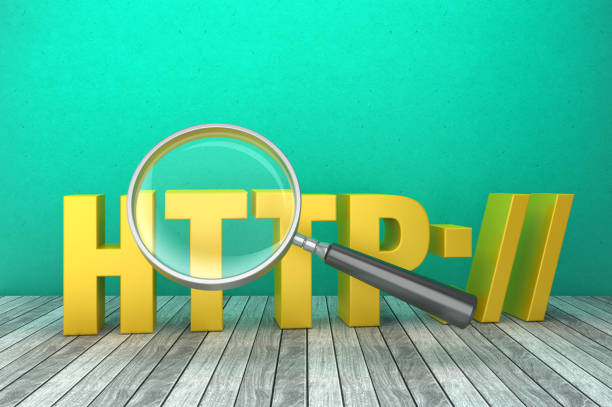
Page loading speed is an important factor in On-Page SEO and user experience.
Users who have to wait a long time for a web page to load are likely to leave your website and visit another website.
Search engines also consider page loading speed as a ranking factor.
To optimize page loading speed, optimize your images (as explained in the previous section).
Use an optimized Content Management System (CMS).
Some content management systems, such as WordPress, offer page loading speed optimization capabilities.
Use a Content Delivery Network (CDN).
A CDN is a network of servers that stores your website content around the world.
When a user from a geographic area far from your main server visits your website, the content is served from the closest CDN server to the user, which increases the page loading speed.
Use browser Cache.
Browser cache stores your website content in the user’s browser.
When the user visits your website again, the content is loaded from the browser cache, which increases the page loading speed.
By following these tips, you can optimize the page loading speed of your website and help improve On-Page SEO and user experience.
Page loading speed is an important factor in search engine rankings and can have a significant impact on your website’s traffic and conversion rate.
Are you disappointed with the low conversion rate of your online store?
Rasaweb, with its professional online store design, is your definitive solution!
✅ Increase your sales and revenue
✅ Unparalleled user experience for your customers
⚡ Get free advice now!
Optimizing for Mobile
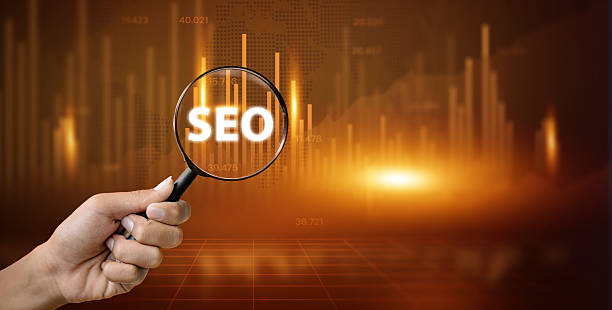
With the increasing use of mobile devices, optimizing your website for mobile is a necessity.
Search engines prefer websites that are optimized for mobile.
To optimize your website for mobile, use Responsive Design.
Responsive design allows your website to automatically adapt to the screen size of the user’s device.
Optimize the page loading speed for mobile.
Mobile users usually use a slower internet connection than desktop users.
Therefore, optimizing page loading speed for mobile is more important.
Use readable fonts and appropriate sizes.
Text on the mobile website should be easy to read.
Use large and touchable buttons.
Buttons on the mobile website should be large enough for users to easily touch them.
Use images and videos optimized for mobile.
Images and videos on the mobile website should be optimized to reduce page loading speed.
By following these tips, you can optimize your website for mobile and help improve On-Page SEO and user experience.
Optimizing for mobile is an important factor in search engine rankings and can have a significant impact on your website’s traffic and conversion rate.
Monitoring and Continuous Improvement

On-Page SEO is an ongoing process that requires monitoring and continuous improvement.
You should regularly check the performance of your website and identify its strengths and weaknesses.
To monitor website performance, use web analytics tools such as Google Analytics and Google Search Console.
These tools provide valuable information about website traffic, keywords that users use to reach your website, pages with the most visits, and other important metrics.
Using this information, you can evaluate the On-Page SEO performance of your website and identify areas that need improvement.
For example, if you notice that your page loading speed is slow, you can take steps to improve it.
If you notice that your ranking is low for a specific keyword, you can optimize your page content for that keyword.
On-Page SEO is a dynamic process and search engine algorithms are constantly changing.
Therefore, you should always be aware of the latest changes and adjust your On-Page SEO strategy accordingly.
By monitoring and continuously improving On-Page SEO, you can improve your website’s ranking in search results, attract more traffic, and ultimately achieve your business goals.
Frequently Asked Questions
| Question | Answer |
|---|---|
| What is On-page SEO? | On-page SEO refers to a set of actions that are performed within your website to improve its ranking in search engine results. This includes optimizing content, site structure, and HTML code. |
| Why is on-page SEO important? | On-page SEO helps search engines understand the content of your page and determine whether your content is relevant to searchers. This is the foundation of any successful SEO strategy. |
| What are the key elements of on-page SEO? | Page title (Title Tag), Meta Description, Keyword Usage, Image Optimization, Heading Structure (H1, H2, …), Internal Linking, and Content Quality are key elements. |
| How do we optimize the page title (Title Tag)? | The page title should include the main keyword, be attractive and encourage clicks, and be between 50 and 60 characters long (or appropriate pixels) to be fully displayed in search results. |
| What role does Meta Description play in on-page SEO? | Meta Description is a summary of the page’s content that is displayed below the title in search results. Although it does not directly affect ranking, it helps SEO by increasing click-through rate (CTR). |
| What is the importance of using the heading structure (H1, H2, H3) in on-page SEO? | Headings structure the page content and make it easier to read. H1 is usually the main title of the page and should include the keyword. H2 and H3 are used to organize subsections and help search engines understand the content hierarchy. |
| How to use keywords effectively in content? | Keywords should be used naturally and logically throughout the content, including the introduction, body, and conclusion. Avoid over-filling keywords (Keyword Stuffing). |
| What are the steps to optimize images for on-page SEO? | Includes compressing images to reduce size, using descriptive file names, adding appropriate alternative text (Alt Text), and optimizing the image title and description. Alt Text is vital for accessibility and helping search engines understand the content of the image. |
| What is internal linking and what are its benefits? | Internal linking means creating links from one page on your website to another page on the same website. This helps users to easily navigate your site, distribute page credibility throughout the site, and help search engines to better understand the structure of your site. |
| What is the importance of content quality in on-page SEO? | Content that is high quality, accurate, comprehensive and valuable to users is the cornerstone of on-page SEO. Search engines prefer content that meets the needs of users. Quality content leads to more user time on the site (Dwell Time) and a lower bounce rate, which are positive SEO signals. |
and other advertising services of Rasa Web advertising agency in the field of advertising
Smart Google Ads: Designed for businesses looking to analyze customer behavior through marketing automation.
Smart Content Strategy: A creative platform for improving customer behavior analysis with marketing automation.
Smart Social Media: Professional optimization for digital branding using marketing automation.
Smart Google Ads: Designed for businesses looking to increase site visits through dedicated programming.
Smart Custom Software: Designed for businesses looking to engage users through attractive user interface design.
and more than a hundred other services in the field of internet advertising, advertising consulting and organizational solutions
Internet Advertising | Advertising Strategy | Advertorial Report
Sources
On-Page SEO: The Definitive Guide – HubSpot
,On-Page Optimization: Moz’s Guide
,What is On-Page SEO? Ahrefs’ Guide
,On-Page SEO: Key Tips from Yoast
? Are you looking to improve your business in the digital world? Rasaweb Aferin, the leading digital marketing agency, specializing in SEO, online advertising and fast website design, paves the way for your success.
📍 Tehran, Mirdamad Street, next to the Central Bank, South Kazerun Alley, Ramin Alley, No. 6

